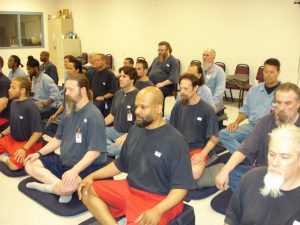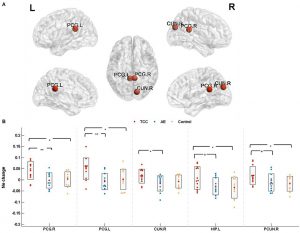Improve Psychological Health with Extended Confinement with Mindfulness
By John M. de Castro, Ph.D.
“During a long-term professional containment, as implied by a long-term submarine patrol, mindful disposition appears as a protective functioning to efficiently manage with the constraints due to the confinement.” – Barbara Lefranc
Confinement for extended periods of time can have very detrimental effects on the psychological well-being of individuals. Solitary confinement is thought of as extreme punishment due to its negative psychological impact. But even when prolonged confinement is social, as in submarine deployment, it also has psychological consequences including problematic moods and decreases in cognitive ability. Mindfulness has been shown to improve cognition and mood even in confinement as occurs in prisons. So, it would be expected that mindfulness would be related to an individual’s ability to cope with the stresses of the prolonged confinement characteristic of life on deployed submarines.
In today’s Research News article “Subsurface Confinement: Evidence from Submariners of the Benefits of Mindfulness.” (See summary below or view the full text of the study at: https://www.ncbi.nlm.nih.gov/pmc/articles/PMC8267514/ ) Aufauvre-Poupon and colleagues recruited male submariners and had them complete measures of mindfulness, psychological functioning, interoception, sleep, food and appetite, and physical activity before during and after a deployment of at least 60 days. They then separated the participants based on factor analysis into a mindful and non-mindful group.
They report that as the patrol progressed the participants had significant decreases in positive experiences, sleep, and interoception and significant increases in negative experiences and emotions. In comparison to the non-mindful group, the mindfulness group had significantly greater positive experiences and interoception and significantly lower negative experiences and emotions during the deployment.
These results suggest not surprisingly that during a deployment in a confined space interoceptive ability and psychological health deteriorates. It should be noted that mindfulness was not manipulated. Rather those participants who were already mindful were compared to those who were not. Hence, the two groups were composed of different individuals who likely differed in many ways other than mindfulness and these differences may account for the results. Nevertheless, the mindful group had significantly less deterioration during the deployment.
A deployment in a confined space is very stressful and this could produce the deterioration in psychological well-being. Mindfulness though may be an antidote. It is known to improve the individual’s psychological and physical responses to stress. It is possible, then, that mindful submariners are better able to cope with the stress and thereby have smaller deceases in psychological health during the extended confinement of the deployment. This improved ability to cope with confinement may account for the ability of mindfulness to improve psychological health during confinement due to the Covid-19 pandemic.
So, improve psychological health with extended confinement with mindfulness.
“On many journeys, the hours are long and the days blend together. Nonetheless, these seafaring professionals have systems in place that allow them to be productive, keep their sanity, and even enjoy themselves.” – Kelly Chase
CMCS – Center for Mindfulness and Contemplative Studies
This and other Contemplative Studies posts are also available on Google+ https://plus.google.com/106784388191201299496/posts and on Twitter @MindfulResearch
Study Summary
Aufauvre-Poupon, C., Martin-Krumm, C., Duffaud, A., Lafontaine, A., Gibert, L., Roynard, F., Rouquet, C., Bouillon-Minois, J. B., Dutheil, F., Canini, F., Pontis, J., Leclerq, F., Vannier, A., & Trousselard, M. (2021). Subsurface Confinement: Evidence from Submariners of the Benefits of Mindfulness. Mindfulness, 1–11. Advance online publication. https://doi.org/10.1007/s12671-021-01677-7
Abstract
Objectives
The subsurface ballistic missile nuclear submarine (SSBN) is an extreme professional environment in which personnel are both isolated and confined during patrols, which can last longer than 2 months. This environment is known to degrade submariners’ mood and cognition.
Methods
This exploratory, empirical study followed a cohort of 24 volunteer submariners. Dispositional mindfulness was assessed with the Freiburg Mindfulness Inventory, in order to identify two groups (mindful and non-mindful) and compare change in emotional state, interoception, and health behaviors during the patrol.
Results
Overall, psychological health deteriorated during the patrol. However, mindful submariners demonstrated better psychological adaptation and interoception than the non-mindful group. This was associated with better subjective health behaviors (sleeping and eating).
Conclusions
Dispositional mindfulness appears to protect against the negative effects of long-term containment in a professional environment, such as a submarine patrol. Our work highlights that mindfulness may help individuals to cope with stress in such situations. Developing mindfulness could also be an important preventive healthcare measure during quarantine imposed by the outbreak of a serious infectious disease.
https://www.ncbi.nlm.nih.gov/pmc/articles/PMC8267514/









